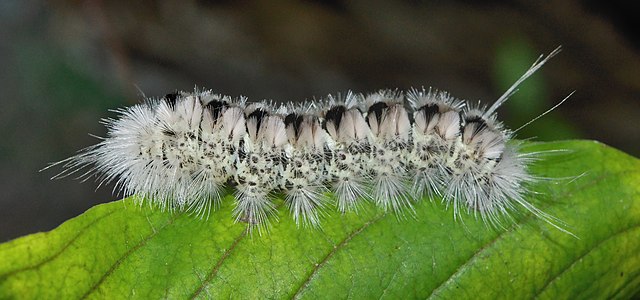
Watch out for these fuzzy caterpillars in Maine this fall
By Susan Bard, Bangor Daily News Outdoors Editor
Several caterpillar species in Maine can cause skin reactions, including the invasive browntail moth. One of the most common caterpillars in the fall — the hickory tussock moth — can cause skin irritation if touched.
At first glance, they may look almost cute, but don’t be fooled. These caterpillars are easily recognized by their white and black tufts, which they use to deter predators like birds. Their barbed hairs can embed in skin and often cause redness, irritation or a rash.
Tussock caterpillars are most noticeable in late summer and fall, when they leave host trees to find sheltered spots to spin their cocoons and overwinter. Due to their movement and striking appearance, they are easy to spot on the ground or in leaf litter. They are most commonly found in hardwood stands.
Other tussock species to watch for include the white-marked tussock moth, banded tussock and spotted tussock caterpillars, which may also appear in Maine in the fall.
I recently had a run-in with a hickory tussock: while driving, I felt a hot, prickling sensation on my shoulder. Looking down, I saw one of these fuzzy culprits on my shirt. By the next day, I’d broken out in hives — definitely an experience to avoid.